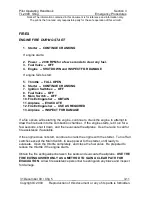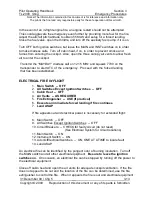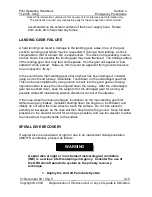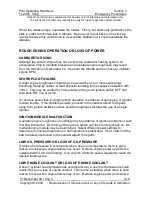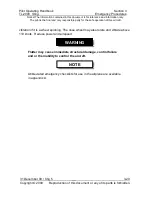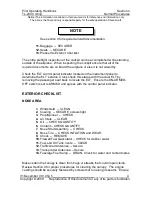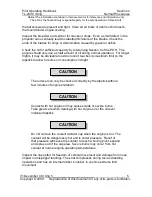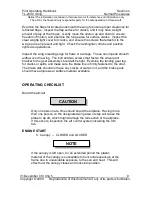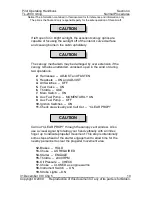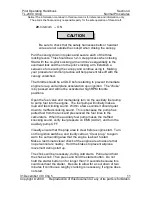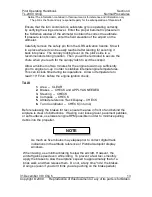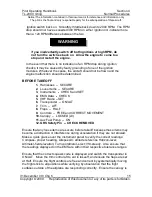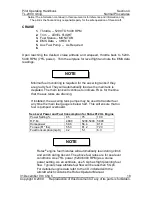
Pilot Operating Handbook
Section 4
TL-2000
Sting
Normal Procedures
Notice! The information contained in this document is for reference and information only.
The pilot is the final and only responsible party for the safe operation of this aircraft.
31 December 09 / Chg 5_____________________________________________4
Copyright © 2009 Reproduction of this document or any of its parts is forbidden.
See section 9 for required aircraft documentation.
11.
Baggage -- SECURED
12.
Seats -- SECURE
13.
Proceed to Exterior Checklist
The entire preflight inspection of the cockpit can be accomplished while standing
outside of the airplane. When inspecting the cockpit ensure that all of the
required documents are on board the airplane or else it is not airworthy.
Check the ELT control panel indicator located on the instrument panel to
determine the ELT’s status. Cross check this status with the actual ELT by
removing the passenger seat back to locate the ELT. Ensure the ON-ARMED-
OFF switch is set to ARMED and agrees with the control panel indicator.
EXTERIOR CHECKLIST
NOSE AREA
1.
Windshield -- CLEAN
2.
Cowling -- SECURE, screws tight
3.
Prop/Spinner -- CHECK
4.
Air Inlets -- CLEAR
5.
Oil -- CHECK QUANTITY
6.
Coolant – CHECK QUANTITY
7.
Nose Strut Assembly -- CHECK
8.
Nose Tire -- CHECK INFLATION and WEAR
9.
Chock -- REMOVE
10.
Firewall Fuel Gascolator – CHECK for debris / water
11.
Fuel and Oil Tank Vents -- CLEAR
12.
Traffic Alert Antennae -- Secure
13.
Transponder Antennae -- Secure
14.
Fuselage Fuel Sump -- DRAIN, Check for water and contaminates
Make certain the canopy is clean from bugs or streaks that could impair vision.
Review Section 9 for proper procedures for cleaning the canopy. The engine
cowling should be securely fastened by screws that run along its seams. Ensure
NOTE


